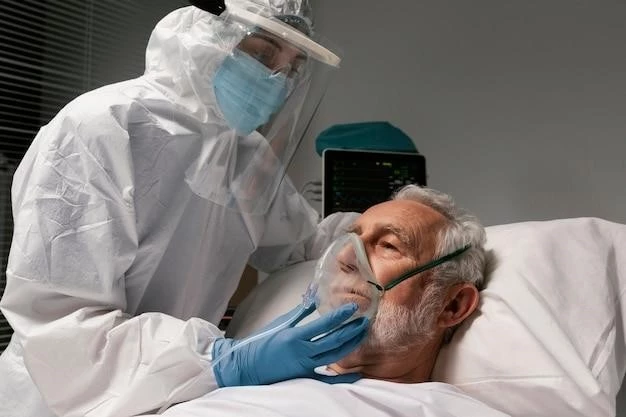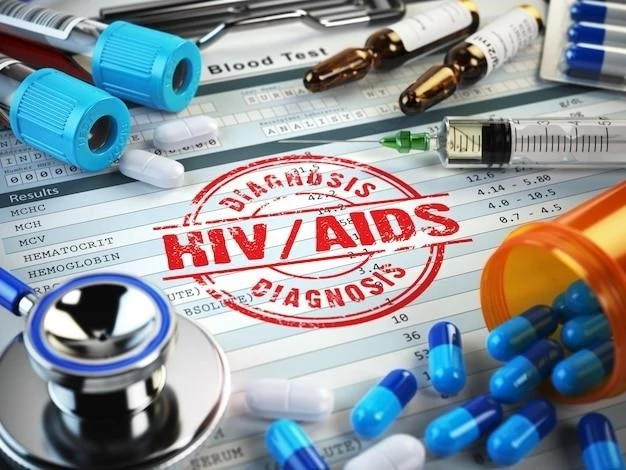Disease ⎯ HSV-2 Infection
Herpes Simplex Virus Type 2 (HSV-2) is a sexually transmitted infection that causes genital sores and blisters. This article will cover symptoms٫ diagnosis٫ transmission٫ outbreaks٫ complications٫ treatments٫ prevention strategies٫ and the impact on the immune system.
Introduction to HSV-2 Infection
Herpes Simplex Virus Type 2 (HSV-2) is a common sexually transmitted infection that primarily affects the genital area. It is typically spread through sexual contact with an infected individual. HSV-2 can cause painful genital sores and blisters, leading to discomfort and emotional distress for those affected. The virus remains in the body after the initial infection, with the potential for recurring outbreaks over time. Diagnosis is often based on symptoms and confirmed through laboratory tests.
HSV-2 infection is a significant public health concern globally due to its high prevalence and impact on individuals’ quality of life. Understanding the symptoms, transmission, treatment options, and prevention strategies is crucial for managing and reducing the spread of this sexually transmitted infection. Research continues to explore new antiviral medications and approaches to address the challenges posed by HSV-2.
Symptoms and Diagnosis
HSV-2 infection can manifest with various symptoms, including small, painful blisters, ulcers, or sores on the genital area. Individuals may experience itching, burning, or tingling sensations before the appearance of sores. Some may also have flu-like symptoms such as fever, body aches, and swollen lymph nodes during the initial outbreak.
Diagnosis of HSV-2 typically involves a physical examination of the genital area and laboratory tests such as viral culture, polymerase chain reaction (PCR), or blood tests to detect the presence of the herpes virus. Differentiating HSV-2 from other genital infections is crucial for appropriate treatment and management. Healthcare providers may also consider a person’s sexual history and risk factors when evaluating for HSV-2.
Transmission of HSV-2
HSV-2 is primarily transmitted through sexual contact with an infected individual, especially through vaginal, anal, or oral sex. The virus can be passed on even when the infected person does not have visible symptoms or sores, as asymptomatic shedding can occur. Genital herpes is highly contagious during active outbreaks when sores are present, but transmission can also happen when the virus is dormant.
Other modes of transmission include skin-to-skin contact in the genital area, sharing sex toys, and in rare cases, from mother to newborn during delivery. Using barrier methods such as condoms can reduce the risk of herpes transmission but may not provide complete protection. It is essential for individuals with HSV-2 to inform their sexual partners to prevent further spread of the virus.
Outbreaks and Complications
HSV-2 infection can result in recurring outbreaks of genital sores and blisters, typically triggered by factors such as stress, illness, or a weakened immune system. Outbreaks may vary in frequency and severity among individuals, with some experiencing multiple episodes per year while others have infrequent or no recurrences.
Complications of HSV-2 include the potential for sores to be accompanied by pain٫ discomfort٫ and difficulty urinating. In some cases٫ the infection can lead to more severe issues such as meningitis٫ urinary retention٫ and neonatal herpes if transmitted to newborns during childbirth. Proper management of outbreaks and regular monitoring can help reduce the risk of complications associated with HSV-2 infection.

Treatment Options
The management of HSV-2 infection revolves around antiviral medications that can help alleviate symptoms, reduce the frequency of outbreaks, and minimize the risk of transmission to sexual partners. Commonly prescribed antiviral drugs include acyclovir, valacyclovir, and famciclovir, which work by inhibiting the replication of the herpes virus.
Antiviral treatment can shorten the duration of outbreaks and lessen the severity of symptoms when taken at the first sign of an episode. For individuals with frequent recurrences, suppressive therapy may be recommended to reduce the frequency of outbreaks and asymptomatic shedding. It is essential to follow healthcare provider instructions regarding the dosage and duration of antiviral medication to optimize treatment outcomes.
Prevention Strategies
Preventing the transmission of HSV-2 involves several key strategies aimed at reducing the risk of acquiring or spreading the virus. Consistent and correct use of condoms during sexual activity, including vaginal, anal, and oral sex, can help lower the chances of infection. However, it is important to note that condoms may not provide complete protection as HSV-2 can be present on areas not covered by the barrier.
Avoiding sexual contact during active outbreaks and when symptoms are present is crucial to prevent transmitting the virus to partners. Open and honest communication about herpes status with sexual partners can also help in making informed decisions about sexual activities. Additionally, regular testing for sexually transmitted infections, including HSV-2, can aid in early detection and appropriate management.
Impact on the Immune System
HSV-2 infection can have implications for the immune system, particularly in individuals with compromised immune function. The virus can challenge the body’s immune response, leading to recurrent outbreaks and prolonged symptom duration. People with weakened immune systems, such as those with HIV/AIDS or undergoing immunosuppressive therapy, may experience more severe and frequent herpes outbreaks.
Furthermore, HSV-2 can cause immune activation and inflammation in the genital area, potentially affecting the overall immune balance in the body. Managing HSV-2 infection in individuals with existing immunodeficiency requires close medical supervision and tailored treatment approaches to address both the herpes symptoms and the underlying immune system challenges. Research continues to explore the complex interactions between HSV-2 and immune function to improve treatment outcomes.
Conclusion
In conclusion, HSV-2 infection is a prevalent sexually transmitted disease that poses significant health challenges globally. Understanding the symptoms, transmission routes, treatment options, prevention strategies, and impact on the immune system is crucial for effectively managing the infection. Early diagnosis, antiviral treatment, and lifestyle modifications can help individuals with HSV-2 lead healthier lives and reduce the risk of transmission.
Prevention efforts, including safe sexual practices, open communication with partners, and regular testing, play a vital role in controlling the spread of HSV-2. Managing outbreaks and potential complications requires a multidisciplinary approach involving healthcare providers, counselors, and support networks. Continued research and public health initiatives aimed at raising awareness and combating stigma surrounding HSV-2 are essential for improving the well-being of those affected by this sexually transmitted infection.
